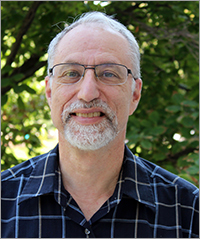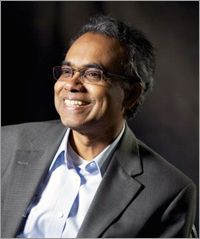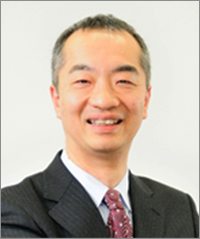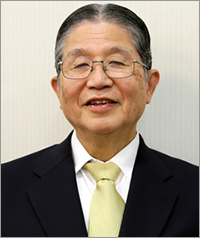Howard Katz, Professor
Whiting School of Engineering, John Hopkins
 Howard Katz is a synthetic/physical organic chemist with research interests in organic, hybrid, and interfacial electronics. He has published over 280 papers and obtained over 50 patents, with an H-index above 70. He was one of the early pioneers in organic electronics, including being first to show the high mobility-single crystal relationship in pentacene and the electron transporting capability of naphthalenetetracarboxylic diimides. He synthesized many other prototypical subunits used in conjugated and semiconducting molecules and polymers. He also has experience and expertise in the design and synthesis of dipolar organic molecules and polymers, the self-assembly of these compounds into electroactive thin films, the control of electronic properties at the interfaces of insulating and semiconducting, and factors affecting charge carrier transport through and along these films.
Howard Katz is a synthetic/physical organic chemist with research interests in organic, hybrid, and interfacial electronics. He has published over 280 papers and obtained over 50 patents, with an H-index above 70. He was one of the early pioneers in organic electronics, including being first to show the high mobility-single crystal relationship in pentacene and the electron transporting capability of naphthalenetetracarboxylic diimides. He synthesized many other prototypical subunits used in conjugated and semiconducting molecules and polymers. He also has experience and expertise in the design and synthesis of dipolar organic molecules and polymers, the self-assembly of these compounds into electroactive thin films, the control of electronic properties at the interfaces of insulating and semiconducting, and factors affecting charge carrier transport through and along these films.
His most recent publications reveal the time-resolved and local-field-controlled changes in charge carrier density at organic semiconductor-dielectric interfaces, demonstrations of mechanism-based enhancements to biosensor and vapor sensor performance, uses of static charged polymers in semiconductor device control, and relationships between dopants and conjugated polymer structures leading to increased conductivity and thermoelectric activity. His current research applications are in the areas of chemical and biomolecule sensors, dielectric heterostructures, compound semiconductor-organic hybrid structures, self-assembled nanostructures, thermoelectric energy conversion, and cancer detection.
Katz is a Fellow of four professional societies, was named to the National Academy of Inventors, and has two R&D100 Awards. He earned degrees from the Massachusetts Institute of Technology (Sc.B., Chemistry, and Humanities and Science, 1978) and University of California, Los Angeles (Ph.D., Organic Chemistry, 1982), was Distinguished Member of Technical Staff at Bell Laboratories (to 2004), the 2004 President of the Materials Research Society, and the 2008-2010 President of the International Union of Materials Research Societies. He served as the Department of Energy Materials Chemistry meeting chair and an NIH panel member in 2014, and serves on two journal and two company advisory boards. He is presently a Professor of Materials Science and Engineering at Johns Hopkins University, with a joint appointment in Chemistry, and is an elected member of the JHU Academic Council.
Thomas Thundat, Professor
School of Engineering and Applied Sciences, University at Buffalo
 Thomas Thundat is a professor of Empire Innovation at the University of Buffalo, New York. He is also a Canada Excellence Research Chair professor at the University of Alberta, Edmonton, Canada. He is also a Distinguished Professor at the Indian Institute of Technology, Madras, and Centenary Professor at the Indian Institute of Science, Bangalore. He was a research group leader and a Corporate Fellow of the Oak Ridge National Lab until 2010. He received his Ph.D. in physics from the State University of New York at Albany. He is the author of over 400 publications in refereed journals, 45 book chapters, and 40 patents. Dr. Thundat is an elected Fellow of the American Physical Society (APS), the Electrochemical Society (ECS), the American Association for Advancement of Science (AAAS), the American Society of Mechanical Engineers (ASME), the SPIE, American Society of Biomedical and Biological Engineers (AIMBE), and the National Academy of Inventors (NAI).
Thomas Thundat is a professor of Empire Innovation at the University of Buffalo, New York. He is also a Canada Excellence Research Chair professor at the University of Alberta, Edmonton, Canada. He is also a Distinguished Professor at the Indian Institute of Technology, Madras, and Centenary Professor at the Indian Institute of Science, Bangalore. He was a research group leader and a Corporate Fellow of the Oak Ridge National Lab until 2010. He received his Ph.D. in physics from the State University of New York at Albany. He is the author of over 400 publications in refereed journals, 45 book chapters, and 40 patents. Dr. Thundat is an elected Fellow of the American Physical Society (APS), the Electrochemical Society (ECS), the American Association for Advancement of Science (AAAS), the American Society of Mechanical Engineers (ASME), the SPIE, American Society of Biomedical and Biological Engineers (AIMBE), and the National Academy of Inventors (NAI).
Dr. Thundat’s research is currently focused on developing new concepts in nanomechanical sensing, energy conversion, electrical energy transmission using single wire, and novel concepts for charge separation and storage.
Kohzo Ito, Professor
Division of Transdisciplinary Sciences, Department of Advanced Materials Science, University of Tokyo
 Kohzo Ito received his B.E, M.E. and Ph.D. degrees in applied physics from the University of Tokyo. In 1986, he joined the Research Institute of Polymers and Textiles. He was transferred back to Faculty of Engineering, the University of Tokyo in 1991 and promoted to full professor at Graduate School of Frontier Sciences, the University of Tokyo in 2003.
Kohzo Ito received his B.E, M.E. and Ph.D. degrees in applied physics from the University of Tokyo. In 1986, he joined the Research Institute of Polymers and Textiles. He was transferred back to Faculty of Engineering, the University of Tokyo in 1991 and promoted to full professor at Graduate School of Frontier Sciences, the University of Tokyo in 2003.
He is now concurrently a program manager of ImPACT (Impulsive Paradigm Change through Disruptive Technology) program, Cabinet Office, Government of Japan. He has been researching the polymer physics and supramolecular chemistry and now is focusing on polyrotaxane, necklace-like supramolecule with topological characteristics. He invented slide-ring materials with movable cross-links by cross-linking polyrotaxane in 2000, and set up a venture company to urge the application of the slide-ring materials in 2005.
He has been the author of over 300 publications including original research papers, reviews, and books, and about 70 patents. He received The Award of the Society of Polymer Science, Japan (2006). And he is currently an editor of Polymer, Elsevir.
Dr. Akira Fujishima, Professor
Tokyo University of Science; Director, Photocatalysis International Research Center
 Akira Fujishima is known for significant contributions to the discovery and research of photo catalytic and superhydrophilic properties of titanium dioxide (TiO2).
Akira Fujishima is known for significant contributions to the discovery and research of photo catalytic and superhydrophilic properties of titanium dioxide (TiO2).
Professor Fujishima has been the recipient of many prestigious awards and honors.




